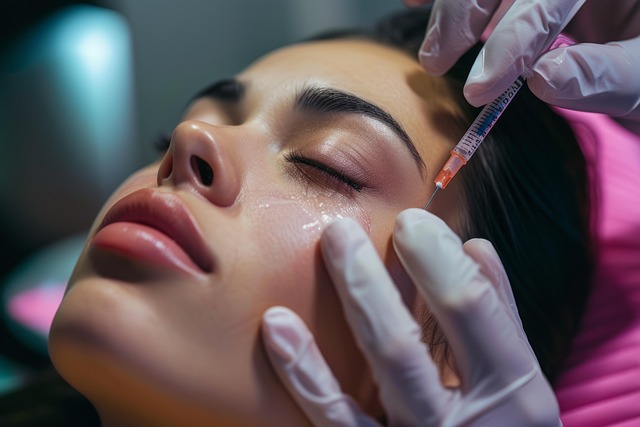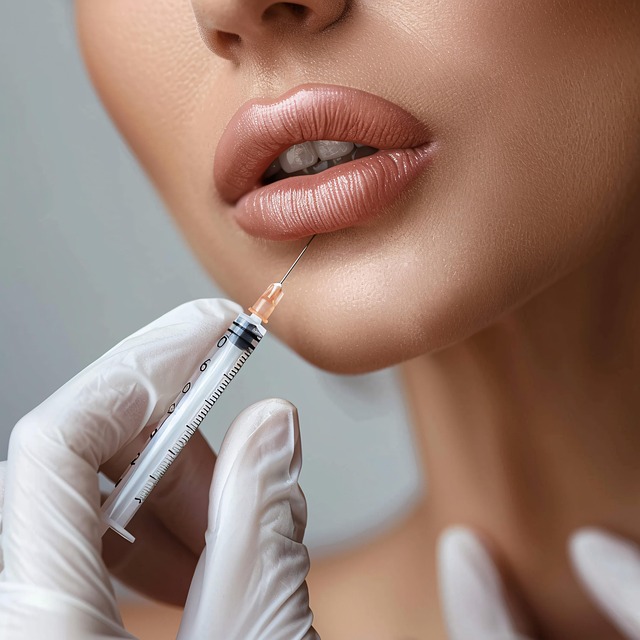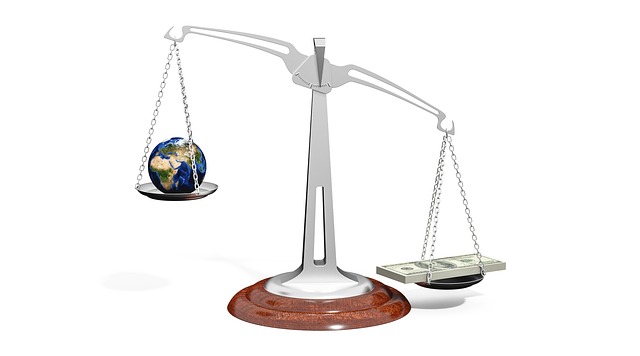Early wrinkle prevention strategies like Botox and dermal fillers are popular for maintaining a youthful complexion. Botox, a neurotoxin, relaxes facial muscles to prevent dynamic wrinkles caused by expressions, while dermal fillers enhance skin volume using substances like hyaluronic acid for static wrinkles. The choice between them depends on individual needs: Botox targets muscle-related wrinkles, and dermal fillers address deeper, static lines. Botox offers longer-lasting results (3-6 months), minimal downtime, and fewer side effects compared to dermal fillers, making it a popular early prevention method. Consulting a dermatologist helps determine the best treatment based on specific wrinkle types and aesthetic goals.
“Early wrinkle prevention is a game-changer in skincare. As we age, understanding the science behind skin aging is key to maintaining a youthful complexion. This article delves into the world of aesthetic treatments, focusing on Botox and dermal fillers as powerful tools for fine line reduction. We explore the mechanisms of Botox, its advantages over fillers, potential drawbacks, and how to choose the best option for your skin. By comparing Botox vs dermal fillers, you’ll gain insights to make an informed decision for effective early wrinkle management.”
Understanding Early Wrinkle Prevention: The Role of Botox and Dermal Fillers

Early wrinkle prevention is a topic that’s gaining traction as people seek to maintain youthful-looking skin. Understanding the role of Botox and dermal fillers in this process is key. These two treatments, while often used for anti-aging purposes, differ significantly in their mechanisms and effects.
Botox, a neurotoxin, works by relaxing facial muscles, preventing them from contracting and causing wrinkles. It’s particularly effective for dynamic wrinkles, those formed by constant facial expressions like smiling or frowning. Dermal fillers, on the other hand, add volume to the skin by injecting a substance into the dermis, the skin’s second layer. They smooth out static wrinkles and enhance facial contours, providing a more youthful appearance. The choice between Botox and dermal fillers depends on individual needs, with Botox being ideal for muscle-related wrinkles and dermal fillers suitable for deeper, static lines.
What is Botox and How Does it Work for Wrinkle Reduction?

Botox, a neurotoxin derived from bacteria, has become a popular choice for early wrinkle prevention. When injected into specific muscles, Botox blocks nerve signals that cause the contraction of those muscles, thereby smoothing out fine lines and wrinkles. This non-surgical procedure is particularly effective in treating dynamic wrinkles, which form as a result of repeated facial expressions like frowning or squinting.
Unlike dermal fillers that add volume to the skin, Botox works from within by preventing muscle contractions. This makes it a unique option for those looking to prevent wrinkles from forming in the first place. While both Botox and dermal fillers have their merits, Botox offers a more targeted approach, making it an ideal choice for individuals seeking subtle yet effective wrinkle reduction, especially in areas like the forehead, crow’s feet, and frown lines.
Advantages of Botox Over Dermal Fillers for Fine Lines

Botox has emerged as a preferred choice for early wrinkle prevention compared to dermal fillers, offering several advantages in the battle against fine lines and wrinkles. One of its key benefits is its ability to relax facial muscles, which is particularly effective in reducing dynamic wrinkles caused by frequent frowning, squinting, or smiling. Unlike dermal fillers that add volume and plumpness, Botox provides a non-invasive approach by temporarily paralyzing specific muscle groups, resulting in a smoother, more youthful complexion.
Additionally, Botox offers longer-lasting results, typically lasting between 3 to 6 months, which is often longer than many popular dermal filler treatments. This makes it an attractive option for individuals seeking a long-term solution without the need for frequent touch-ups. The minimal downtime and relatively non-irritating nature of Botox injections also make it a more comfortable choice for those concerned about recovery time and potential side effects compared to dermal fillers.
Disadvantages and Considerations for Botox Treatments

While Botox is a popular choice for early wrinkle prevention, it’s not without its disadvantages and considerations compared to dermal fillers. One key difference lies in their mechanism of action. Botox works by paralyzing muscles that cause wrinkles, while dermal fillers add volume and plumpness to the skin by injecting hyaluronic acid or other substances beneath the surface.
Choosing between Botox and dermal fillers depends on individual needs and preferences. Botox is typically more suitable for preventing expression lines and dynamic wrinkles, those that form when you smile, frown, or squint. Dermal fillers, on the other hand, are often preferred for adding volume to deeper static wrinkles and enhancing overall facial contour. It’s important to consult a qualified dermatologist to understand which treatment aligns best with your specific concerns and goals.
Dermal Fillers: An Alternative Approach to Early Wrinkle Management

In the quest for youthful skin, many individuals are turning to non-invasive cosmetic procedures, and two popular options are Botox and dermal fillers. While both aim to reduce signs of aging, they work in slightly different ways. Botox, a well-known treatment, targets muscle movement by injecting a neurotoxin that relaxes the muscles responsible for forming wrinkles. On the other hand, dermal fillers enhance skin volume and elasticity by injecting hyaluronic acid or collagen into the dermis, smoothing out fine lines and enhancing facial contours.
When considering early wrinkle prevention, Botox is often seen as a quick fix for dynamic wrinkles, especially around the eyes and forehead. Dermal fillers, however, offer a more gradual approach, providing immediate results but with a slower effect compared to Botox. The choice between the two depends on an individual’s preferences, budget, and desired outcome. Some may opt for a combination of both treatments, utilizing Botox for specific problem areas and dermal fillers to add volume and definition to other parts of the face.
Comparing Results, Side Effects, and Recovery Times

When considering early wrinkle prevention, it’s essential to compare the outcomes, side effects, and recovery times of Botox and dermal fillers, two popular cosmetic treatments. Botox, a neurotoxin that temporarily paralyzes muscles, is known for its ability to smooth fine lines and wrinkles by relaxing facial expressions. On the other hand, dermal fillers enhance skin texture and volume by injecting hyaluronic acid or collagen into deep skin layers.
In terms of results, both treatments offer significant improvements in skin appearance. However, Botox tends to provide a more subtle and natural look, as it only affects the muscle activity responsible for wrinkles. Dermal fillers, while effective in plumping up depressed areas, can sometimes result in a more noticeable enhancement that may not always appear natural. As for recovery, Botox usually takes a few days to take effect and has minimal downtime afterward. In contrast, dermal filler procedures may cause temporary redness, swelling, or discomfort, with some patients requiring time off work or social activities.
Choosing the Right Treatment: Botox vs Dermal Fillers for Your Skin Concerns

When considering early wrinkle prevention, many individuals find themselves contemplating between Botox and dermal fillers – two popular treatments in aesthetic medicine. Both have their merits, catering to different skin concerns and desired outcomes.
Botox is a neurotoxin that relaxes muscles, preventing contraction and thus reducing dynamic wrinkles, especially around the eyes and forehead. It’s ideal for those seeking to minimize fine lines and frown lines caused by constant muscle movement. On the other hand, dermal fillers boost volume loss in the skin, smoothing out static wrinkles and enhancing facial contours. They’re a great option for individuals looking to achieve a more youthful, well-defined face. The choice between Botox vs dermal fillers ultimately depends on the specific wrinkles you want to target and your individual aesthetic goals.
